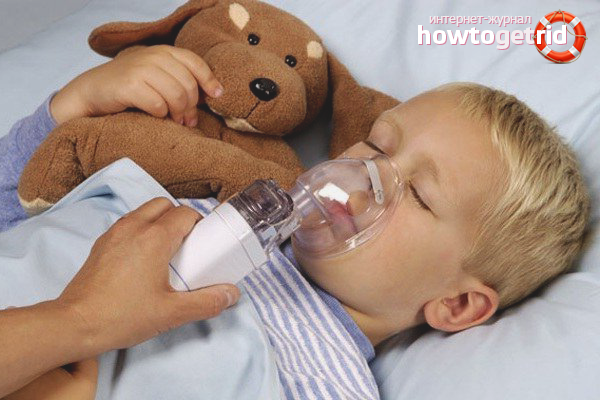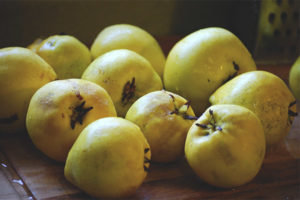The content of the article
The first years of life the child is faced with a huge number of diseases. The fact is that the baby’s immune system is not yet familiar with many viruses and does not have antibodies to them. Gradually, the immune experience becomes richer, and the child stops being sick so often. However, often the course of a common viral cold can result in a complication in the form of various inflammations. Due to age-related anatomical features, diseases of the respiratory system in a child are most common. One of these diseases is laryngotracheitis.
Laryngotracheitis is inflammation of the larynx and trachea. The disease develops quite rapidly, especially in young children. The acute phase of the disease can be very dangerous, due to the narrowing lumen of the larynx. At the same time asphyxiation may begin.If you have heard a dull, hoarse cough, the so-called “seal barking”, this is a reason to immediately seek emergency medical care.
Symptoms of laryngotracheitis in children
Symptoms of laryngotracheitis are similar to signs of a common cold, but the characteristic features of the course of the disease are still present.
- A runny nose can be of any nature, the discharge can be both transparent and thick and green. Often laryngotracheitis is accompanied by inflammation of the adenoids, breathing lays.
- There is an increase in body temperature.
- The disease is accompanied by sore throat, sore throat, discomfort when swallowing. Throat when viewed red, inflamed. The child may complain of discomfort in the throat.
- A distinctive feature of laryngotracheitis is hoarseness, sometimes its complete absence. The voice can also become rough, hoarse. This is especially noticeable when crying or screaming a child. If the voice is changed even in a quiet state, you urgently need to seek medical help - the respiratory lumen is narrowed down quite strongly.
- Another feature of laryngotracheitis is coughing. Usually it is dry, barking, surface.
- Due to the narrowing of the larynx in a child, breathing may be difficult, which is also a reason for hospitalization. Ask your baby to take a deep breath - the patient with laryngotracheitis will probably not be able to do this.
- In addition, there is a general lethargy of the body - the child is weak, he has serious ailments.
- Barking cough most often occurs at night, when mucus accumulates and flows along the back of the larynx, irritating it.
It is extremely dangerous to treat laryngotracheitis at home, especially in children of the first three years of life. The whole thing is in the structure of the respiratory organs of babies - their lumen of the larynx is so small that during inflammation it quickly narrows. If you suspect this disease you need to see a doctor, confirm the diagnosis and get proper treatment.
Causes of laryngotracheitis
Laryngotracheitis most often occurs as a complication of a viral or bacterial infection. The disease can be a companion and a consequence of the flu, cold, pneumonia, bronchitis. Sometimes laryngotracheitis can be allergic in nature - laryngeal edema in this case is a reaction to an allergen.Sometimes inflammation of the larynx and trachea can be the result of air pollution, prolonged stress on the vocal cords, mechanical injuries of the larynx, chemical burns of the mucous membranes.
But how to protect against laryngotracheitis? Why does some people have a cold for 5 days, without any special treatment and complications, while the other child gets stuck in the hospital for several weeks? It all depends on the general condition of the patient. If a virus gets into a weakened, unable to fight organism, it will behave loosely, affecting more and more new organs. Laryngotracheitis can turn into a chronic form on the background of diseases such as cirrhosis of the liver, gastritis, hepatitis, diabetes, tuberculosis, pyelonephritis, bronchial asthma. The course of the disease is aggravated if the child is constantly breathing through the mouth due to allergic nasal congestion, with too dry air in the room.
Treatment of laryngotracheitis in children
The treatment of this disease depends on its etiology. Viral laryngotracheitis is not treated with antibiotics, but it is impossible to do it without bacteriological antibiotics. In addition, you need to carefully monitor the baby, so that in the event of an acute phase, immediately take him to the hospital.
- In viral laryngotracheitis, symptomatic treatment is indicated. First of all, the temperature should not be allowed to rise. The fact is that at high temperatures a person begins to breathe often, as he lacks oxygen. Excessive irritation of the larynx is of no use to us, so we bring down the temperature above 37 degrees. We use antipyretic agents for this - it is better in the form of candles so that the sweet syrup does not irritate the throat.
- It is very important to monitor the psychological state of the child - if he is frightened, the spasm narrows the already narrow lumen of the larynx. Try to calm the child, provide him with emotional peace.
- Very effective for inhalation laryngotracheitis. Children who have a great track record of ENT diseases, it is useful to have a nebulizer at home. Inhalation of hot humid air dilutes the sputum, promotes its removal, disinfects the respiratory tract. Inhalation should not be done at high body temperature.
- When a sore throat is prescribed various antiseptic sprays, as well as sedatives for cough. In addition, a strict diet is prescribed. Sweets and allergenic products provoke an increased production of mucus in the throat, which clogs the narrow lumen. Also banned hot and cold, spicy and salty dishes.
- It is very important to breathe clean, cool and humid air. Disease does not imply abandoning walks. The baby cannot move by itself, as it is very weak. However, a walk in a wheelchair is an excellent option, because fresh air heals laryngotracheitis no worse than drugs. The room should be aired often, use humidifiers.
- In order for the mucus in the throat not to thicken, the child must drink a lot. An abundant warm drink will help to dilute sputum and speedy removal of the virus from the body.
- It is necessary to ensure that the child breathed through the nose, not the mouth. To do this, use vasoconstrictor drops.
- In addition, the child must comply with voice mode. No need to shout, sing, speak loudly - let the bundles rest.
If the baby coughs incessantly, it has a high weight (implying fatty layers inside the larynx, narrowing the lumen), prematurity, congenital anomalies in the structure of the larynx, this is the reason for the immediate hospitalization of the child.
Folk remedies for the treatment of laryngotracheitis
The following recipe helps with inflammation of the respiratory tract. Fill the wheat bran with boiling water and let it stand for a couple of hours. Strain the composition and add a couple of drops of lemon juice. Let the child drink this liquid in the form of heat, one teaspoon 4-6 times a day.
It is very good to soar your feet with mustard plasters, but you should not make warm compresses on your chest and back. This provokes blood flow to the bronchi and lungs, which increases the production of sputum. After recovery, give the child time to restore the body - do not send it to the kindergarten the next day. Strengthening immunity is the best prevention of many diseases.
Laryngotracheitis is a frequent and rather dangerous disease, especially when it comes to a small child. Noticing a deaf barking cough in a baby, do not hesitate, consult a doctor. Competent treatment and an integrated approach will help you to cure an acute disease in the shortest possible time.
Video: acute stenosing laryngotracheitis in children












To send